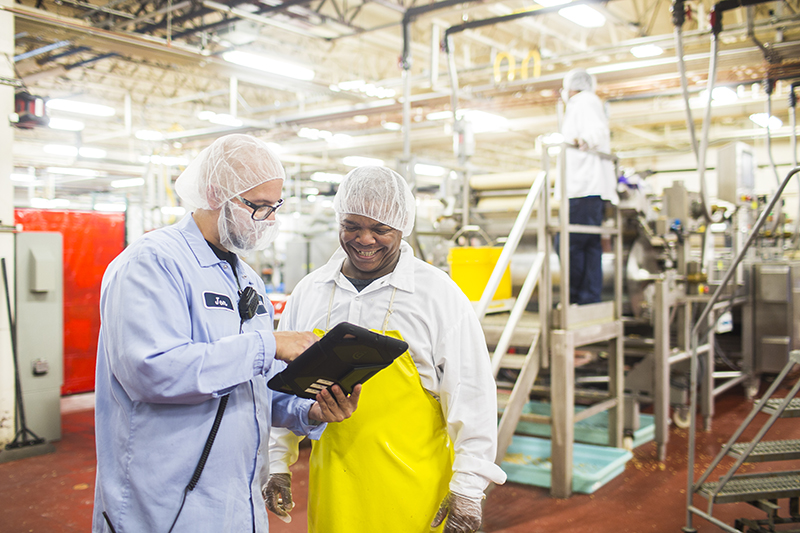Employee training continues to be a hot topic as companies in the food industry gear up for FSMA compliance. Many are working with a much leaner staff and have several different generations of employees, many of whom absorb information in very different ways.
In a Q&A series with Food Safety Tech, Laura Nelson, vice president of business development at Alchemy Systems, discusses how training programs that may have historically been successful are no longer an effective means to educate today’s employees. “A vast majority of employees are doing what we ask and are doing it consistently. But the reality is that we have a subset of folks [who] aren’t doing that,” says Nelson. “I don’t think you can classroom train them to the point that they get it—I think some need that coaching and demonstration; they’re the kinesthetic learners that need to see you do it and then you watch them do it.”
Food Safety Tech: Where are the gaps in how food companies conduct employee education and training today?
Laura Nelson: It can be summarized in three areas.
1. Recognizing that the legacy training programs that food companies have is not effective. Companies are acknowledging that their historical training programs are not entirely effective in driving consistent behaviors. In [a recent] global food safety training [survey], we asked: “Despite our efforts in food safety classroom training, we still have employees not following our food safety program on the plant floor”. Over 60% said they agreed—yes, we still have employees not following our food safety programs. The survey involved 1200+ food safety professionals, so that’s a large number of folks acknowledging that their food safety training programs—largely classroom training—is not delivering the desired results and reducing inherent food safety risks.
There are so many things challenging the food industry and everyone is trying to manage these expanding expectations with their lean teams. The industry is changing dramatically—[from the perspective of] employee demographics, the business itself, pervasiveness of social media and exposure that it brings, and the different regulations—so a static food safety program established two, five or ten plus years ago is not going to address these changes. But who has the time and resources to continually update content, embrace technology and apply the latest behavioral science to the instructional design of new training content? Because of the lack of resources and time challenges, many in the industry are still trying to operate on their legacy training program. It might be old DVDs, PowerPoints, etc. —trainers are covering food safety, workplace safety and operational topics via PowerPoints in all-day sessions, sending around a sign-up sheet and ticking off their training compliance checkbox. Training has to be improved and enhanced for many key reasons—whether it’s considering different cultures, updating languages, engaging millennials or focusing on those critical employee behaviors that present a risk to an individual operation.
2. Understanding that training expands beyond the classroom. The industry as a whole continues to think that classroom training is their training program and that once the classroom training is complete and [the employee is] on the operations floor, that the training and education job is done. The reality is, it’s not. There’s lots more training happening beyond the classroom. Understanding that we need to formalize the extension of the classroom training and manage the ‘plant floor’ training aspect is really important. The industry is starting to embrace this [concept]. Anywhere from formal coaching and mentoring by frontline supervisors to posters and digital signage and short reminders to monthly campaigns on key critical items around food safety. Companies are starting to embrace the power of this holistic approach to training, leveraging new and emerging technology and tools to optimize employee behaviors.
3. Most people are not making the connection between training effectiveness and the ROI, the return on the investment. They think they don’t have the time to make improvements—yet, if they carved out time routinely to assess and evaluate best training practices to make training more effective and implemented these new and proven strategies, then all of a sudden the time and resource question becomes less of an issue because now you’re delivering on things like a decrease in food quality issues or reducing [employees] turnover, decreased downtime, reduced GMP non compliances, etc. It takes some time to establish those related training metrics, but once you’ve done that and have ensured that your holistic training program is current and behaviors are being exhibited consistently, you start to have fewer operational issues, enhanced customer satisfaction and motivated, engaged employees.
In part II of this Q&A series, Nelson shares her insights on training strategies based on employee demographics.






